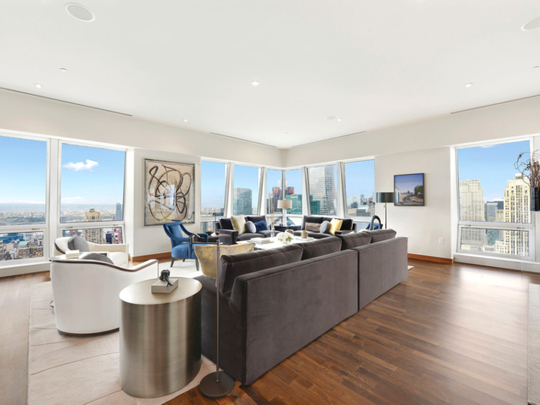
London: In the luxury housing market, more is always better: more space, more light, more (and better) views, more building and more amenities. Development at this level requires an exceptional collaboration between architects and interior designers to endow beauty, luxury and a level of service that place the buildings in a class of their own on a global scale.
New York City’s famous skyline has a new feature in the form of 432 Park Avenue. The creative force behind the project is famed architect Rafael Viñoly.
“I am attracted to the problems and opportunities inherent in every commission. I think about the needs my clients know they have; and those they don’t know they have.” Viñoly said.
Its elegant exterior, a perfectly proportioned framework of squares, makes a powerful and classical statement. Rafael Viñoly says, “The square is a means to an end. It conditions the generous proportions of the interiors and allows the exterior to exist beyond the particular period in which it was designed. “The nature of urban high-rise luxury is clearly expressed in the building’s generous attitude towards space. On the skyline of New York, we wanted to make a contribution that would stand the test of time.”
Just a decade ago, only big businesses occupied the world’s tallest buildings, so it is perhaps a sign of the times that 432 Park Avenue is home to 104 meticulously designed luxury residences. The 10-foot square windows, so integral to the exterior design, command unparalleled views of the city.
Alongside luxurious accommodation the private amenities available to the residents are equally opulent: massage and spa rooms, a 75-foot pool, a gym, a screening room and a private restaurant.
Most new projects like 432 lack the constraints imposed by prior work or existing buildings and the architect, interior designers and developers can begin work on a relatively blank canvas. Whereas restoring, or adapting, an existing building brings with it a quite different set of responsibilities.
The project Canalejas in Madrid, where the modern luxury development is fronted by a historic façade, posed just such a challenge. The opulent residences within Canalejas will sit atop the Four Seasons hotel and have unique access to all the hotel’s world-class amenities.
Access to exceptional services is a key to the desirability of the apartments but so is their design. The interior of each apartment has been carefully designed by Luis Bustamante. His challenge was to accentuate modern tastes for light and space, whilst at the same time embracing the 18th century sensibility.
Originally a sculptor and painter, Bustamante’s artistic eye gives him a unique perspective on interiors from an aesthetic point of view. Bustamante explains, “We seek to create warm spaces in which the ‘beat’ of a cosmopolitan and vibrant city like Madrid is acknowledged, without undermining the essence of the building. This is a historical building, and we must respect this essential aspect, creating a contemporary interior that incorporates the highest quality standards and that sits harmoniously in its surroundings.
“The façade architecture retains its classical essence, but in the rehabilitation of the building we’re trying to make modern and classical style coexist, the same happens with the interior design, In each project I try to learn how my clients like and wish to live, analysing their personalities but never forgetting my interior design rules of order, functionality and harmony. Basically I try to translate their dreams.”
Generosity of space, volume height, proportion and natural light typify modern tastes. All design must ultimately enhance the luxury of the space and must refine and reflect the aspirations of their potential residents.
The attractions of city living are abundant, encompassing culture, food, shopping and business. Living in a sophisticated cosmopolitan environment offers almost limitless diversity and a vibrant way of life. Great cities are also fantastic hubs well connected to the rest of the world — making them fantastic bases for the global investor.
While location, size and well researched pricing are essential ingredients to the success of luxury developments, world-class architecture and design increasingly form a critical part of the equation. The use of well-known architects and interior designers reflects the quality of the final product, allowing individuals to identify with a particular property at a deeper level.
Increasingly, the creation of these exceptional developments has come to be seen as an artistic endeavour on a grand scale.
— The writer is theAssociate Partner, London International Project Marketing, Knight Frank.











